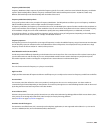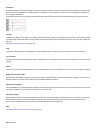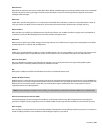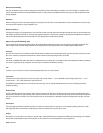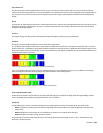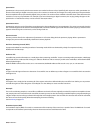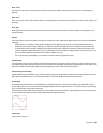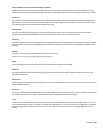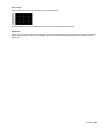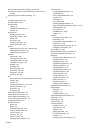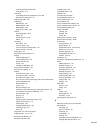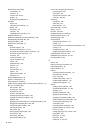Society of Motion Picture and Television Engineers (SMPTE)
SMPTE time code is used to synchronize time between devices. The time code is calculated in hours:minutes:second:frames, where
frames are fractions of a second based on the frame rate. Frame rates for SMPTE time code are 24, 25, 29.97 and 30 frames per second.
Sound Card
The sound card is the audio interface between your computer and the outside world. It is responsible for converting analog signals to
digital and vice-versa. There are many sound cards available on the market today, covering the spectrum of quality and price. Sound
Forge software will work with any Windows-compatible sound card.
Status Format
The status format is the format by which Sound Forge software displays the time ruler and selection times. These include: Time,
Seconds, Frames and all Standard SMPTE frame rates. The status format is set for each sound file individually.
Streaming
A method of data transfer in which a file is played while it is downloading. Streaming technologies allow Internet users to receive data as
a steady, continuous stream after a brief buffering period. Without streaming, users would have to download files completely before
playback.
Telec ine
The process of creating 30 fps video (television) from 24 fps film (cinema).
See also Inverse Telecine (IVTC) on page 349; Pulldown on page 353.
Tempo
Tempo is the rhythmic rate of a musical composition, usually specified in beats per minute (BPM).
Threshold
A threshold determines the level at which the signal processor begins acting on the signal. During normalization, levels above this
threshold are attenuated.
Time Format
The format by which Sound Forge software displays the time ruler and selection times. These can include: Time, Seconds, Frames and all
standard SMPTE frame rates.
Trim/Crop
Trim/Crop is a function that will delete all data in a sound file outside of the current selection. This is a necessary function when dealing
with samples to be played by a sampler to get rid of blank time at the beginning and ending of samples.
µ-Law
µ-Law (mu-Law) is a companded compression algorithm for voice signals defined by the Geneva Recommendations (G.711). The G.711
recommendation defines µ-Law as a method of encoding 16-bit PCM signals into a nonlinear 8-bit format. The algorithm is commonly
used in European and Asian telecommunications. µ-Law is very similar to A-Law, however, each uses a slightly different coder and
decoder.
APPENDIX E | 357



